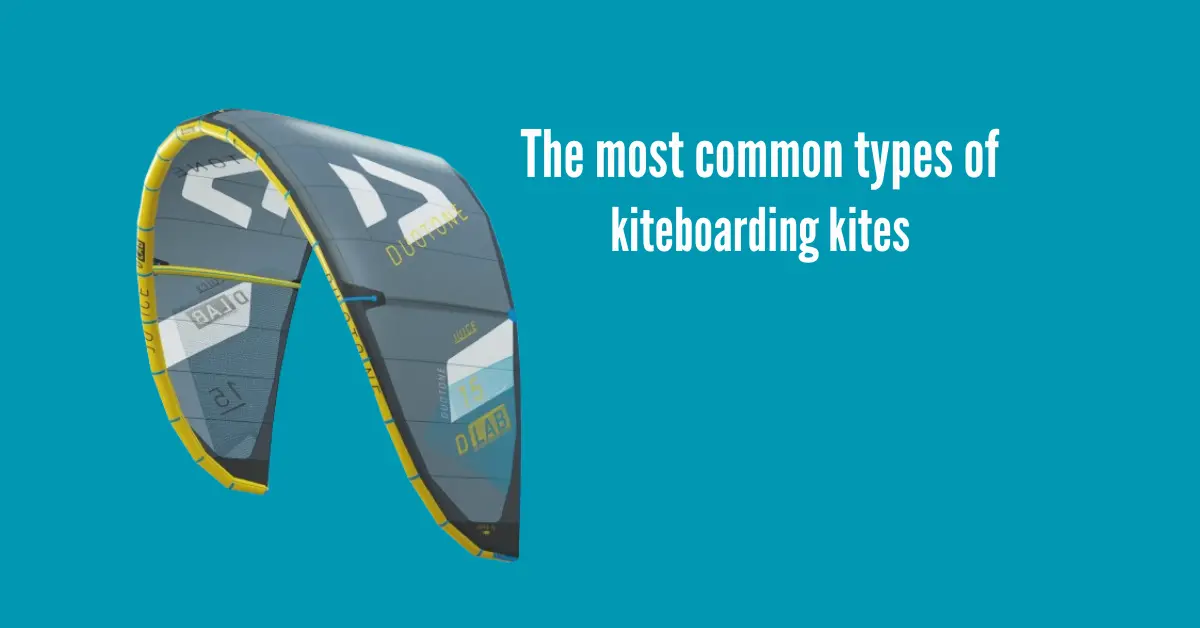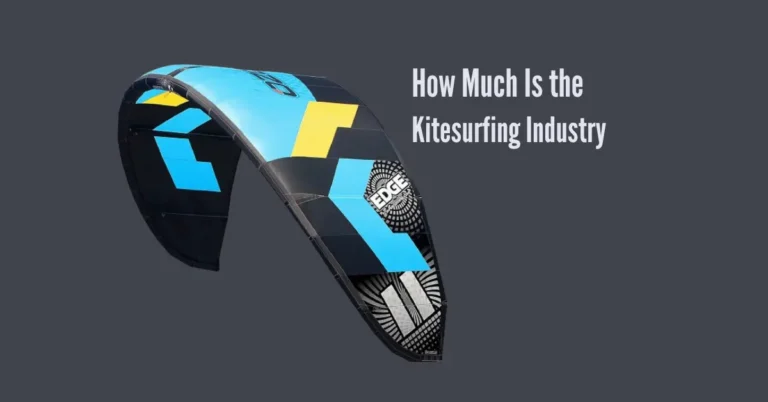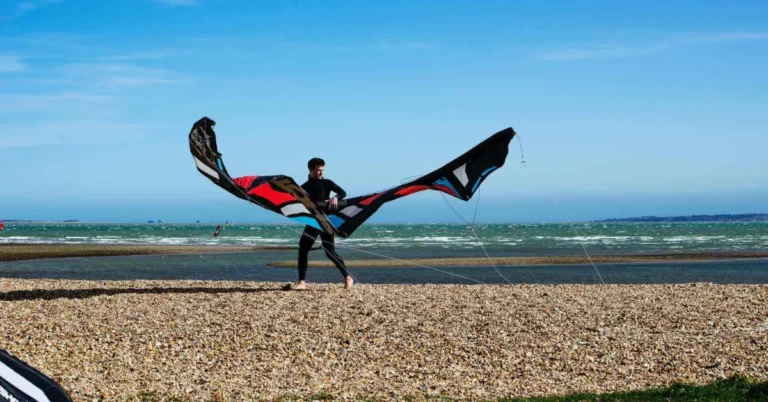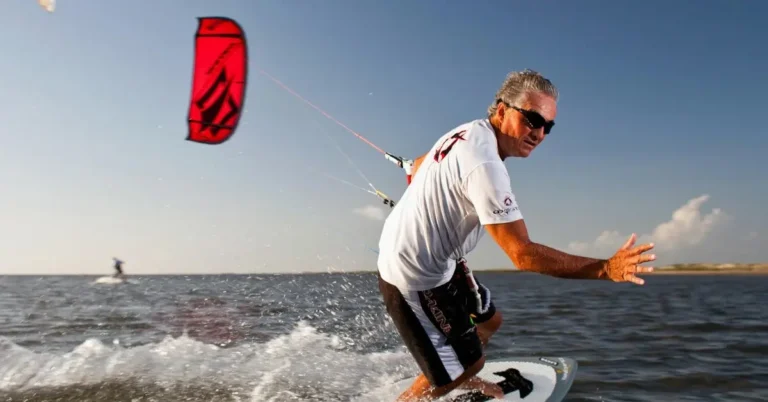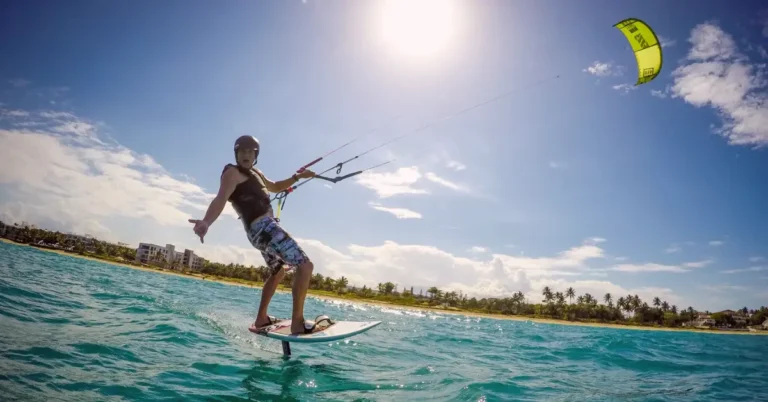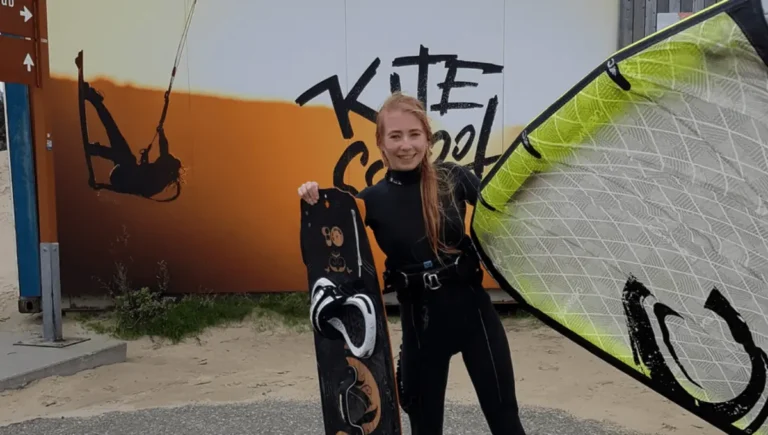The most common types of kiteboarding kites
As kiteboarding continues to surge in popularity, kite design has seen remarkable evolution. From humble beginnings inspired by paragliding, kites have swiftly evolved into advanced models boasting ingenious safety features and high-tech depowering systems. Among the myriad types of kitesurfing kites, two families reign supreme: inflatable kites and foil kites.
While both are versatile across all kiteboarding disciplines, inflatable kites shine in wave riding, leveraging their buoyancy for agile maneuvers. Conversely, foil kites excel in lighter winds, offering graceful performance that enhances the rider’s experience. Explore the fascinating world of kiteboarding kites, where innovation meets adventure.
Also Read: What kind of sport is kitesurfing?
The most common types of kiteboarding kites
1. Inflatable Kites
Inflatable kites, pivotal in modern kiteboarding, utilize plastic bladders within the leading edge, inflated by an air pump. These bladders shape the kite and offer buoyancy, aiding in water landings.
Four prevalent types include C-kites, Bow, Delta, and Hybrid kites. Each variant boasts distinct characteristics, catering to various riding styles and preferences, contributing to the vibrant tapestry of kiteboarding options.
1. The C-Kite
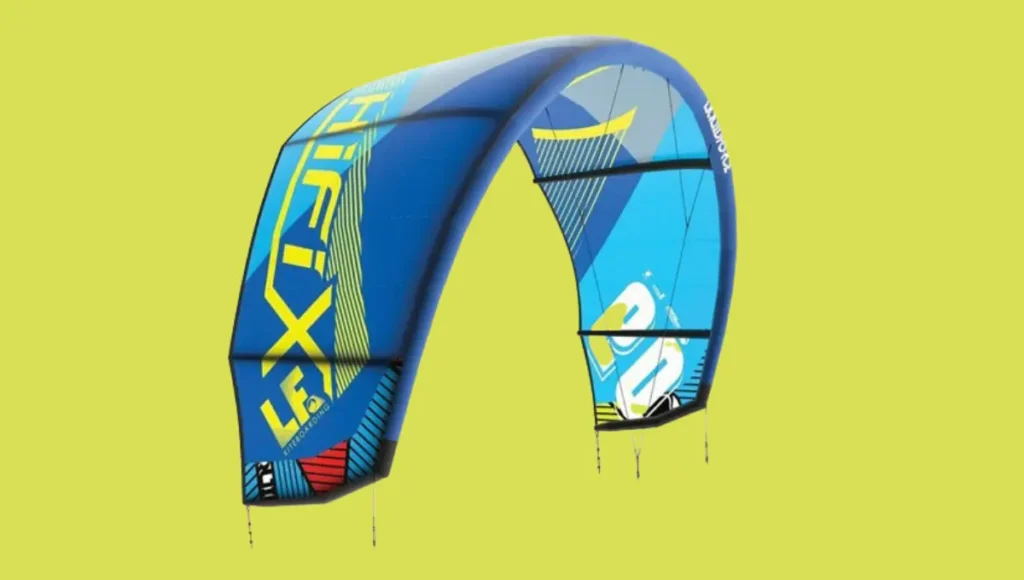
Despite being the oldest variant, the C-kite is a testament to the enduring legacy of inflatable kite design. While its longevity speaks volumes, caution is warranted for beginners due to its formidable power and lift capabilities. However, while unhooked for seasoned riders, its inherent stability presents an enticing proposition, particularly for those immersed in new-school maneuvers and freestyle riding.
Key Features
- Shape: C-shape with elongated wingtips.
- Advantages: Direct control, potent pop, exceptional unhooked riding performance, excels in a narrow wind range.
- Disadvantages: Limited wind range, challenging water relaunch, insufficient depowering, not beginner-friendly.
- Ideal Rider Profile: Enthusiasts of new-school techniques and freestyle kiteboarding.
In summary, the C-kite remains a beloved choice for experienced riders seeking adrenaline-charged thrills and precise water control.
2. The Bow Kite
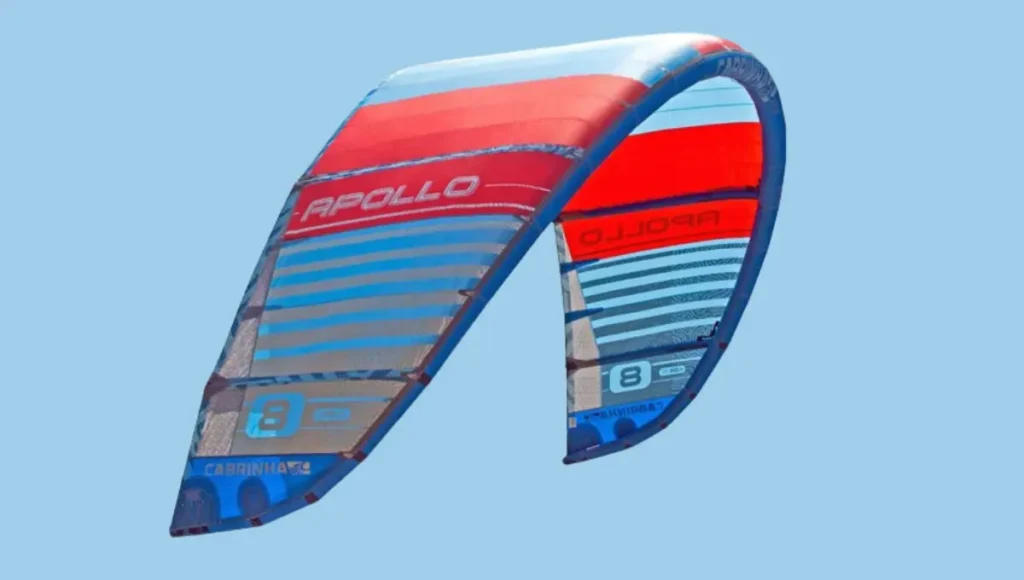
The bow kite emerges as a frontrunner among kite models worldwide, celebrated for its versatility and widespread adoption since its mid-2000s debut. Renowned for its effortless depowering capabilities, facilitated by a sophisticated bridle-pulley system, and ease of relaunch, the bow kite swiftly captured the hearts of kiteboarding enthusiasts.
Key Features
- Shape: Characterized by a flat profile, bridles integrated into the leading edge, and a concave trailing edge.
- Advantages: Boasts a comprehensive depowering system, is safe for beginners, excels across a broad spectrum of wind conditions, and offers hassle-free relaunch capabilities.
- Disadvantages: Not ideally suited for unhooked riding maneuvers.
- Preferred Rider Profile: Embraced by beginners, leisure cruisers, free riders, speed fans, and enthusiasts seeking big air experiences.
The bow kite is a testament to innovation, offering riders of all levels an accessible and exhilarating entry into the kiteboarding world.
3. The Delta Kite
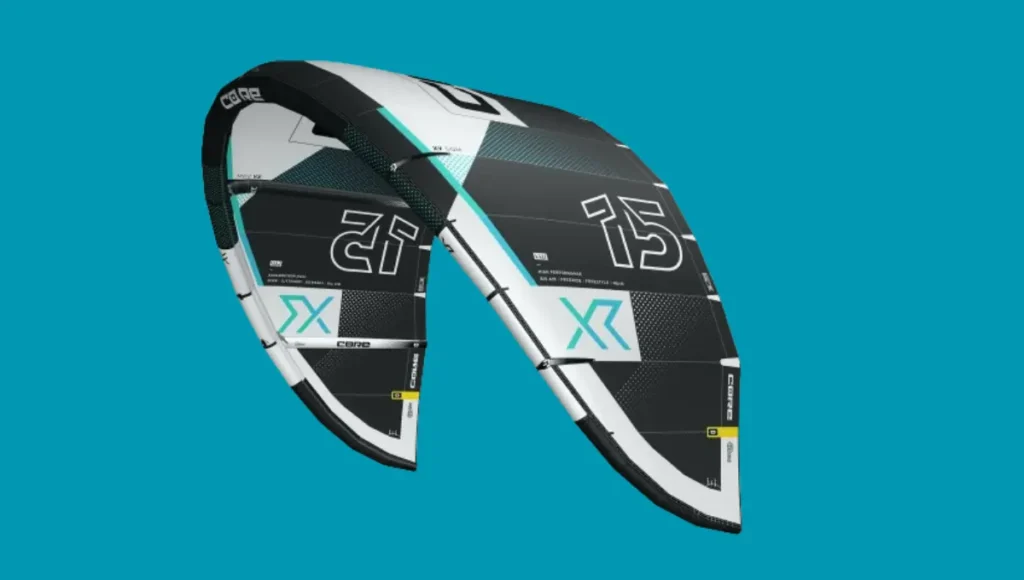
The Delta Kite seamlessly amalgamates the best attributes of both the C-Kite and Delta Kite, offering riders a versatile and user-friendly experience on the water. Characterized by its distinctive D-shape, short and stout profile, and efficient design, the Delta Kite shines brightly in various wind conditions, making it a favorite among kiteboarding enthusiasts.
Key Features
- Shape: Exhibits a D-shape configuration when laid out, coupled with short wingtips and a compact bridle.
- Advantages: Boasts impressive depowering capabilities, excels across a wide wind range, effortlessly relaunches, and is deemed safe for beginners.
- Disadvantages: The Delta Kite may respond slower than other kite variants.
- Preferred Rider Profile: Widely embraced by beginners, wave kitesurfers, leisure cruisers, free riders, speed enthusiasts, and aficionados seeking big air experiences.
The Delta Kite represents a harmonious fusion of performance and accessibility, catering to a diverse spectrum of kiteboarding enthusiasts seeking thrilling adventures on the water.
4. The Hybrid Kite
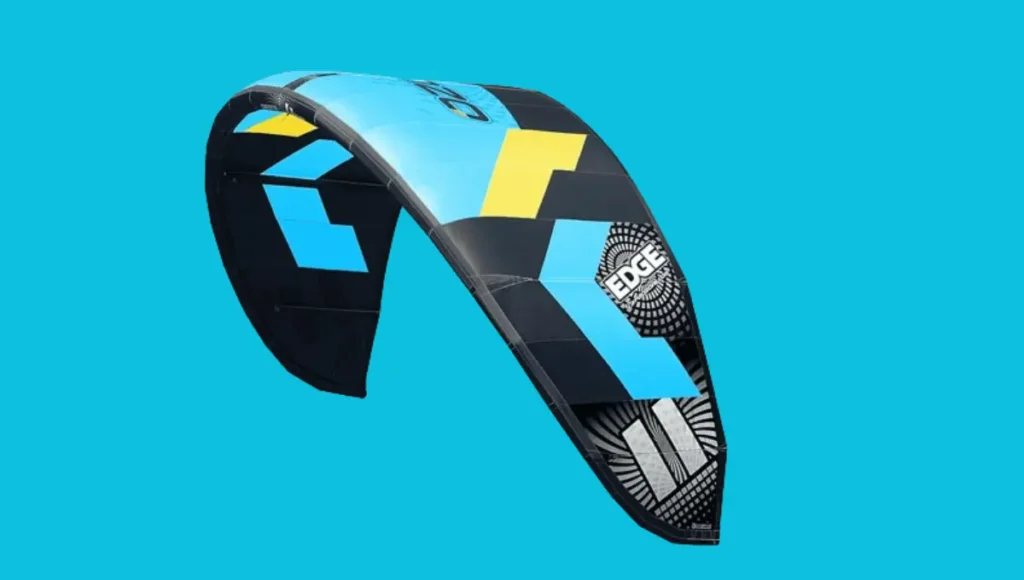
The hybrid kite represents a harmonious synthesis of the safety features inherent in Bow Kites and the dynamic maneuverability reminiscent of C-Kites. This unique blend of characteristics has propelled the hybrid kite to become the go-to choice for many cruisers and free riders seeking an optimal balance between safety and performance on the water.
Key Features
- Shape: Distinguished by short wingtips and a compact bridle configuration.
- Advantages: Offers excellent depowering capabilities, a versatile wind range, effortless relaunching, and a beginner-friendly design.
- Disadvantages: Despite its many advantages, the hybrid kite may respond slower than other kite variants.
- Preferred Rider Profile: Widely embraced by beginners, wave kitesurfers, leisure cruisers, free riders, speed enthusiasts, and aficionados seeking big air experiences.
In summary, the hybrid kite stands as a testament to innovation in kite design, catering to a diverse range of kiteboarding enthusiasts by seamlessly bridging safety and performance for unforgettable experiences on the water.
2. Foil Kites
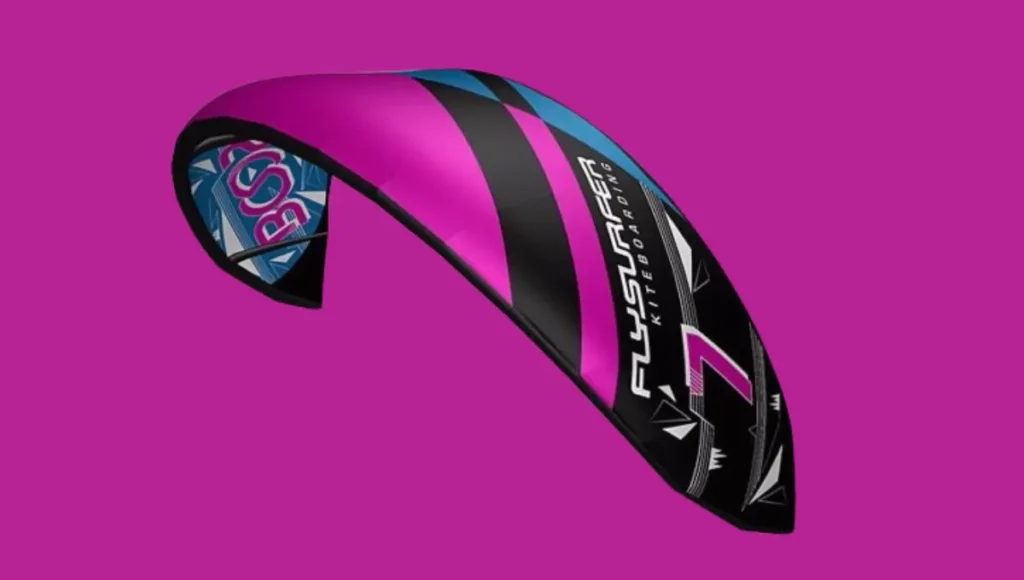
Foil kites, distinguished by their leading-edge cells facilitating air intake, are versatile companions for various kiteboarding disciplines. Their robust construction, featuring multiple bridles supporting a double-layered canopy, ensures reliable performance in diverse conditions. These kites find favor among land and snow kiters for their adaptability in light winds, while kitesurfers appreciate their efficient power control and solo landing capabilities.
Key Features
- Shape: Resembling paragliding wings, available with 2, 3, and 4-line systems.
- Advantages: Ideal for training, land, and snow kiteboarding (open cell variants), as well as water kiteboarding (closed cell variants).
- Disadvantages: Limited versatility compared to other kite types, primarily suited for specific advanced riding styles.
- Preferred Rider Profile: Embraced by inland riders and hydrofoil racers seeking efficient performance and solo landing convenience.
In essence, foil kites, also known as soft kites or ram air kites, embody durability, efficiency, and adaptability, catering to the unique demands of riders across various kiteboarding disciplines.
Conclusion
The world of kiteboarding is richly diverse, with many kite designs catering to the preferences and needs of riders across different disciplines and skill levels. Each type offers unique advantages and characteristics, from the classic C-kites to the versatile bow kites and the efficient foil kites.
Whether you’re a beginner seeking stability and safety or an advanced rider craving adrenaline-fueled maneuvers, there’s a kiteboarding kite suited to your style. With innovation driving the evolution of kite design, the future promises even more exciting possibilities for enthusiasts to explore the exhilarating world of kiteboarding.
